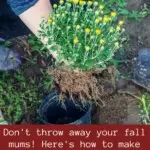
Chrysanthemums, or mums, are definitively the flower of fall.
I used to live near a large and popular nursery. Every year near midsummer, they would set up hundreds of rows of black pots with yards and yards of drip irrigation. There were thousands of mums. And by mid-October, every last one of them would be gone, and they would still be telling folks, “Sorry, you missed them.”
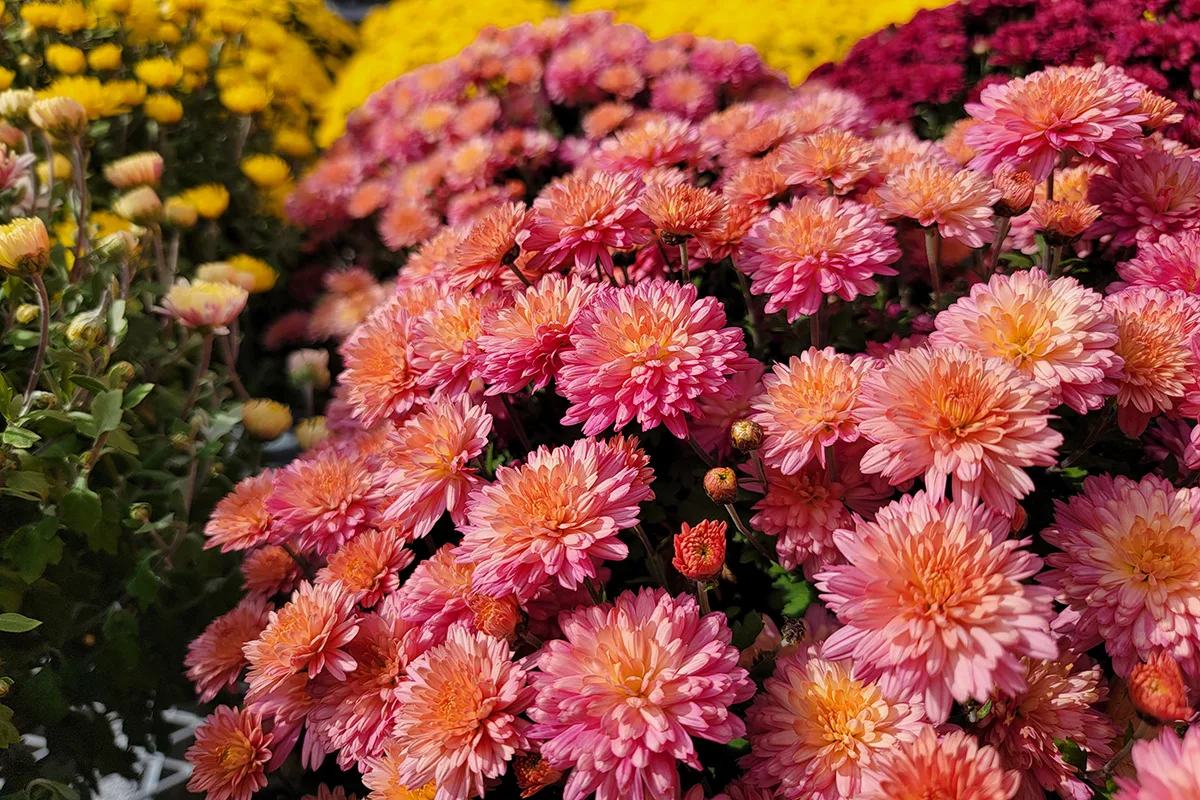
Their popularity is easy to explain. Mums are easy to care for, they fill space beautifully, and their bright oranges, reds, yellows and purples all scream autumn glory. Grab yourself a haystack, a few pumpkins and a mum or two, and you’ve got the perfect fall decoration.
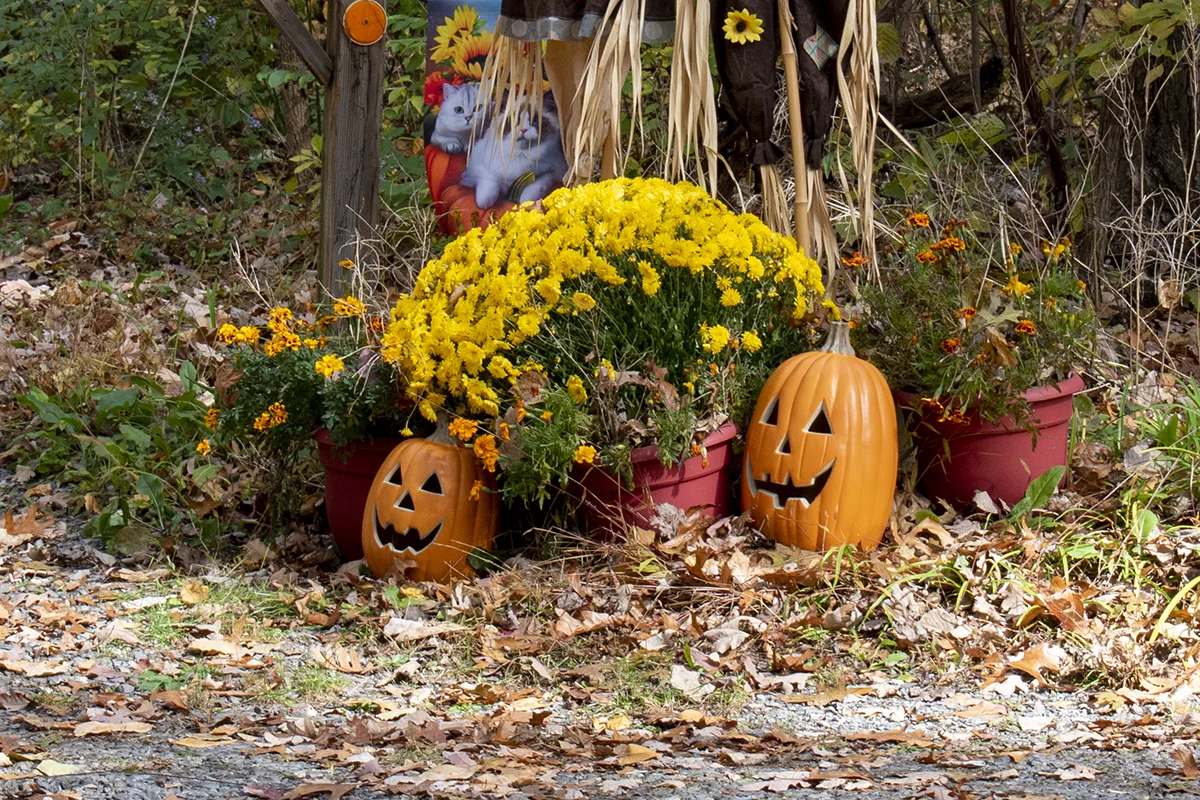
But how do you make them last through the season?
How many times have you bought mums only to have a very unfestive-looking pot of spent flowers a couple of weeks later? Wouldn’t it be nice if your blooms lasted until well after the trick-or-treaters have stopped by your door?
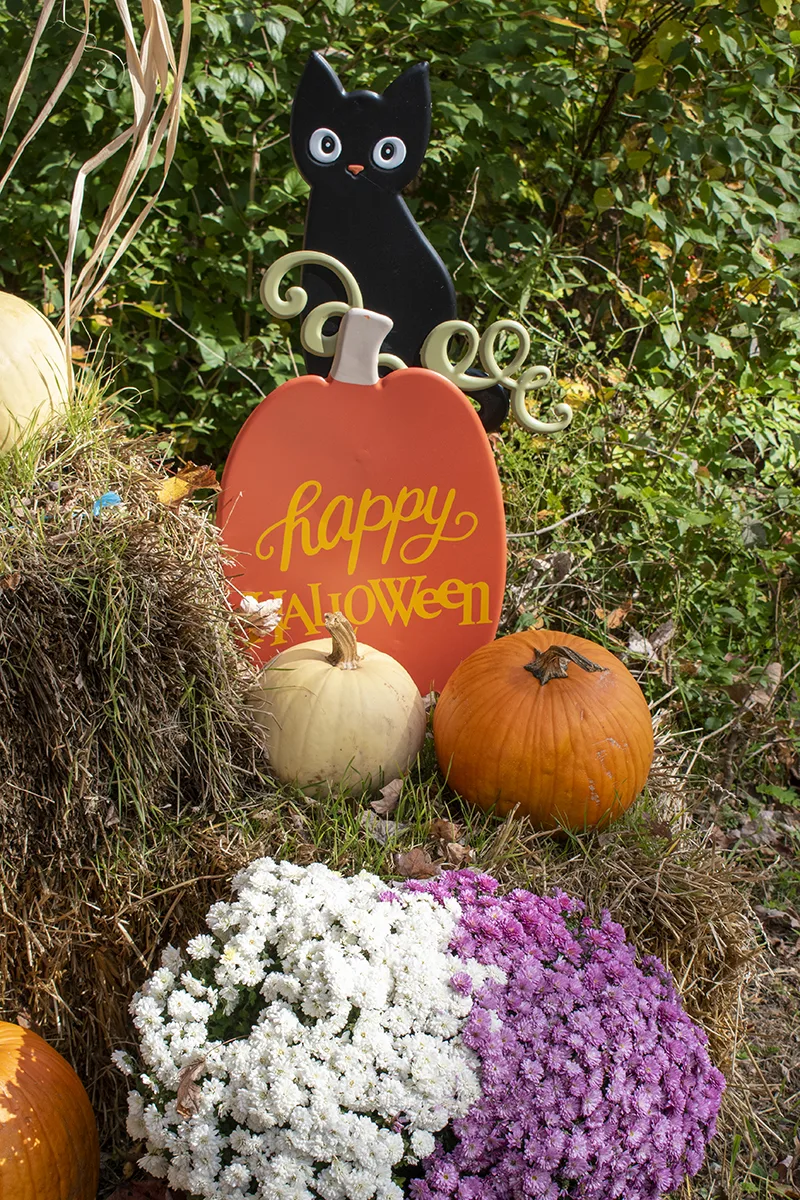
And what a shame that you have to pitch them at the end of the season and buy them again next year.
Or do you? Much like the poinsettia, many people don’t realize these are not disposable plants. It takes very little effort to winter them over and enjoy them again the following fall.
Blooms that Will Outlast the Fall Foliage
1. Buy Them Closed
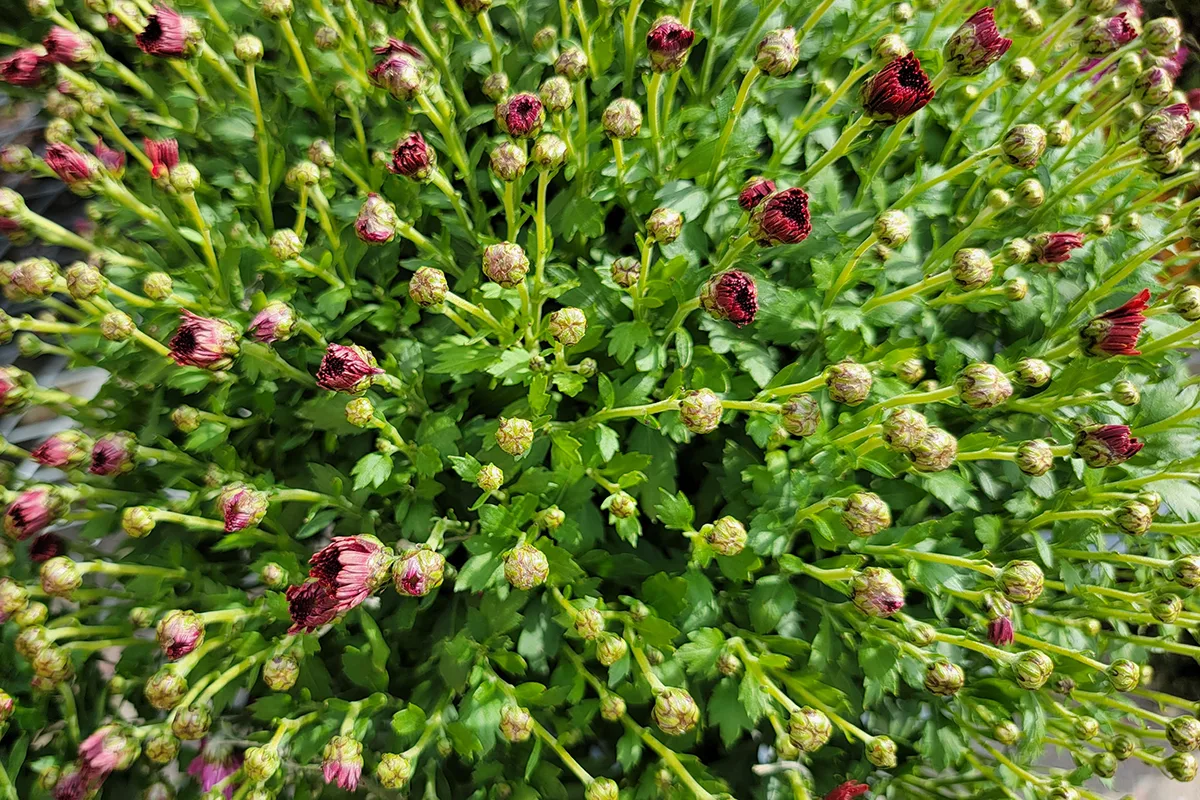
If you want mums that still look great even after the trees have dropped their showy foliage, there are a few things you can do.
Enjoying long-lasting blooms starts when you purchase your mums. While it’s nice to have the instant gratification of plants with a lot of flowers right away, you’ll want to choose mums that haven’t started blooming yet. Choose a plant with buds that are tightly closed. It can be a bit of a gamble, guessing what color you’ll get. If color is really important to you (hi, friend!), then choose a mum with only a few blooms open so you know what you’re getting.
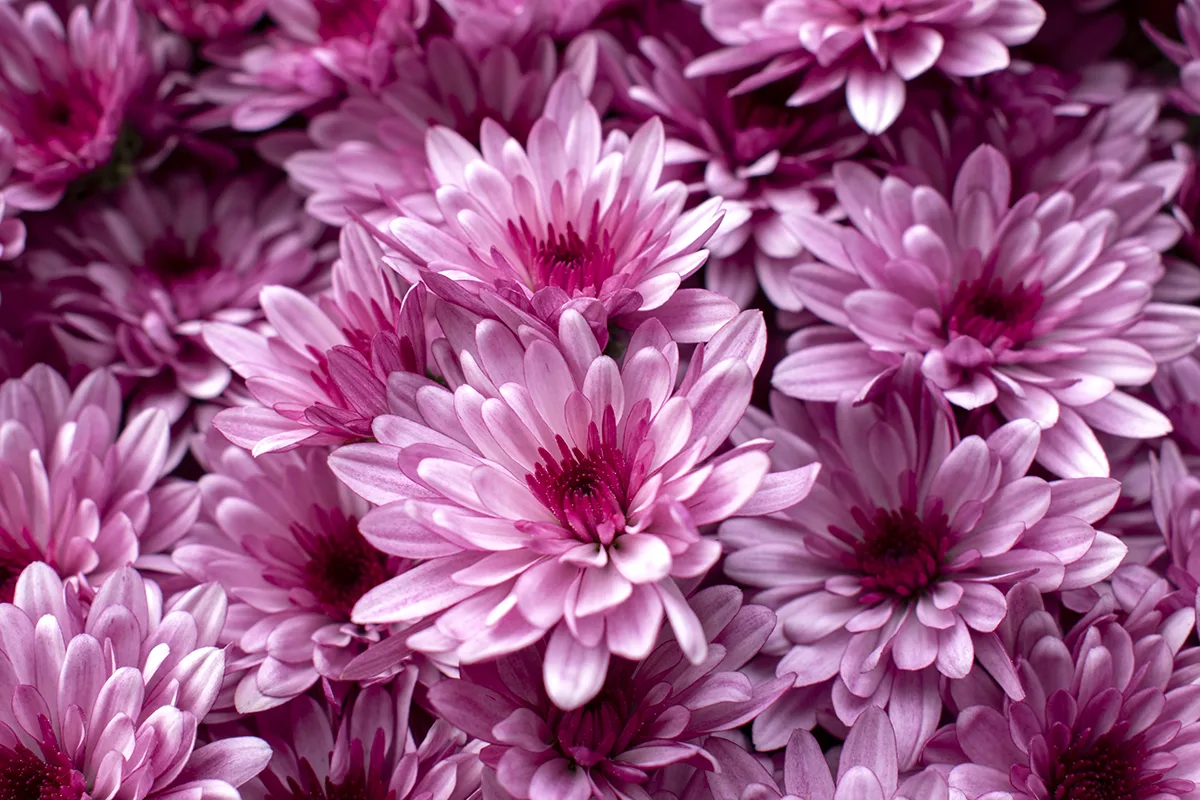
Mums bloom all at once and hold their flowers for quite some time. Choosing plants that are closed at the beginning of the season ensures you’ll have blooms longer when they open.
If you want flowers all fall, mix and match, opting to purchase some mums just starting to bloom and some with closed buds.
2. Give Them Shelter
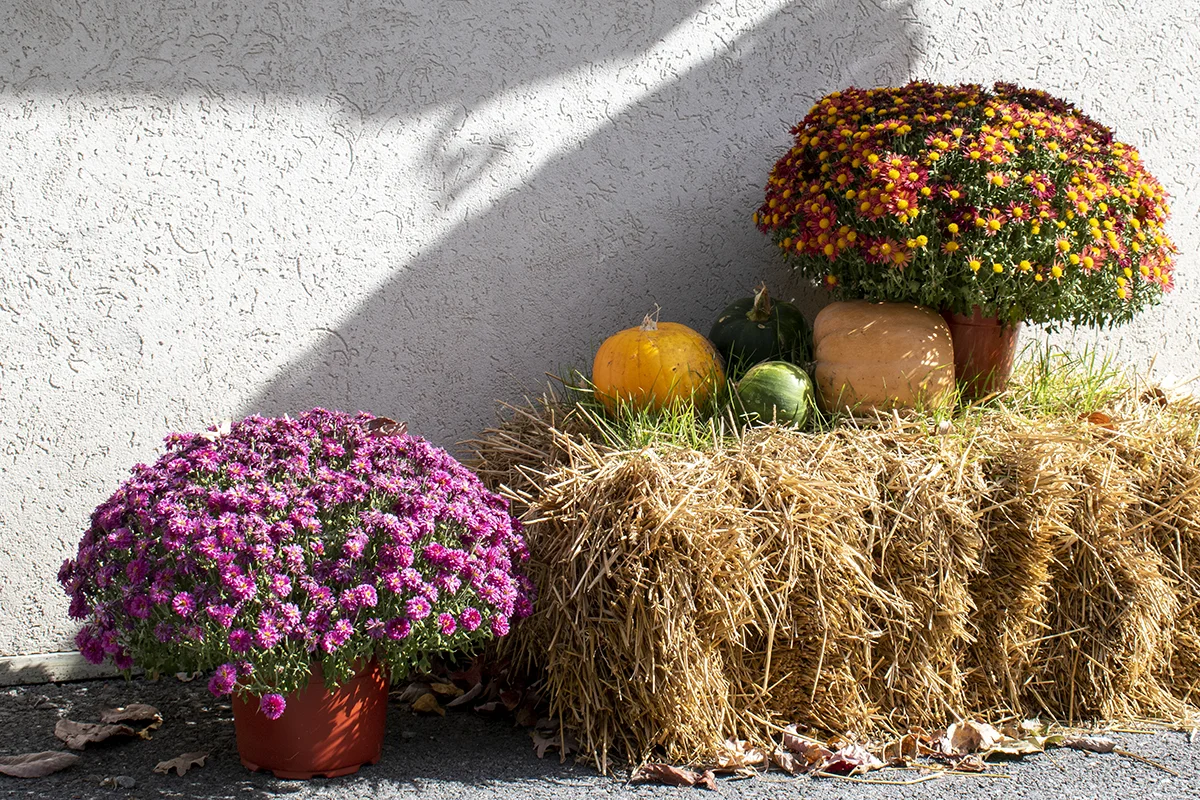
Have you ever got water on colored tissue paper and noticed how the dye bleeds, leaving the paper looking bleached? The same happens with mums exposed to too much rain and sun.
Repeated heavy rain can easily wash out the color in chrysanthemum blooms. You’ll have some that will fade out completely white and others that turn more pastel-hued. Regardless, you’ll no longer have that gorgeous punch of color you were hoping for.
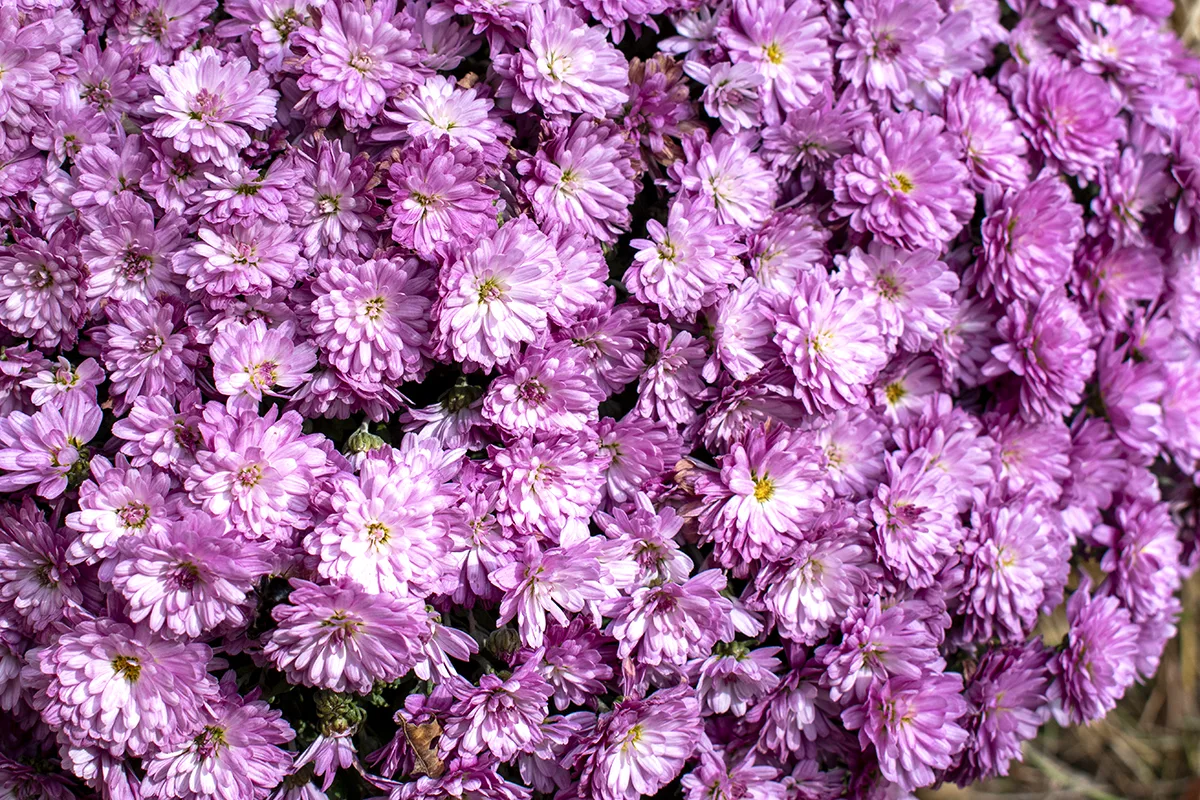
If you plan on displaying your mums somewhere they can get wet; you may want to put them under cover if the forecast calls for heavy rain.
Bright, direct sun can also speed up your mums’ blooming cycle. To eke out every day of color you can, place your mums in an area where they only receive full sun for a few hours a day. Your front porch is a great option if it’s covered. Any partially shaded place is perfect and will help lengthen mums’ bloom cycle.
3. Don’t Let Them Dry Out
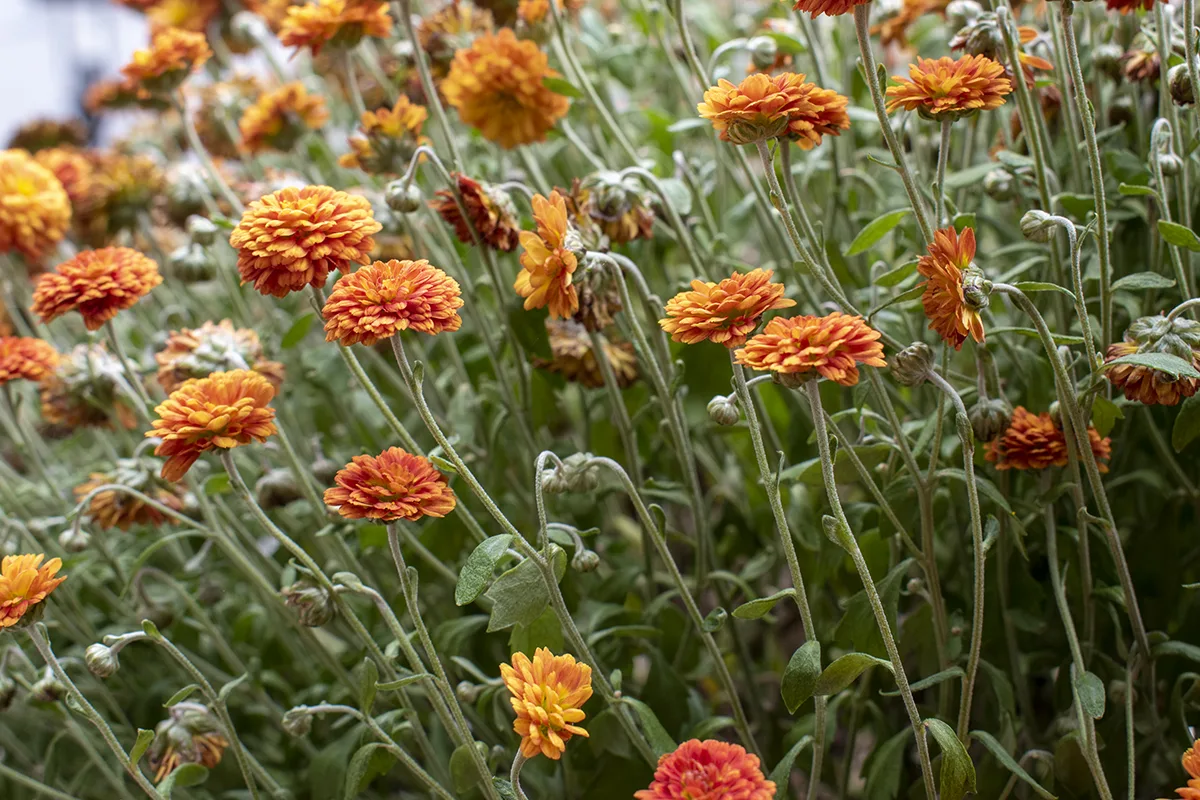
Plants can be finicky about wet feet. Some don’t like having damp roots, and others prefer it. Mums are no exception. To ensure long-lasting blooms all autumn, it’s important not to let your mums dry out.
I water my mums every day and include a little liquid fertilizer. I like Fox Farm’s Big Bloom; it’s a great general-purpose fertilizer. If you get a hot spell (you’ve gotta love that unpredictable fall weather), it’s a good idea to water your mums twice a day. Remember, as large as the flowering part is, it’s all supported by a rather small amount of soil, which dries out quicker than you would expect.
All it takes is a day or two of dry soil for your chrysanthemums to decide to close up shop for the year.
And remember, to keep those blooms saturated with color, water directly at the soil level rather than showering them from above.
Yes! You Can Easily Winter-Over Your Mums
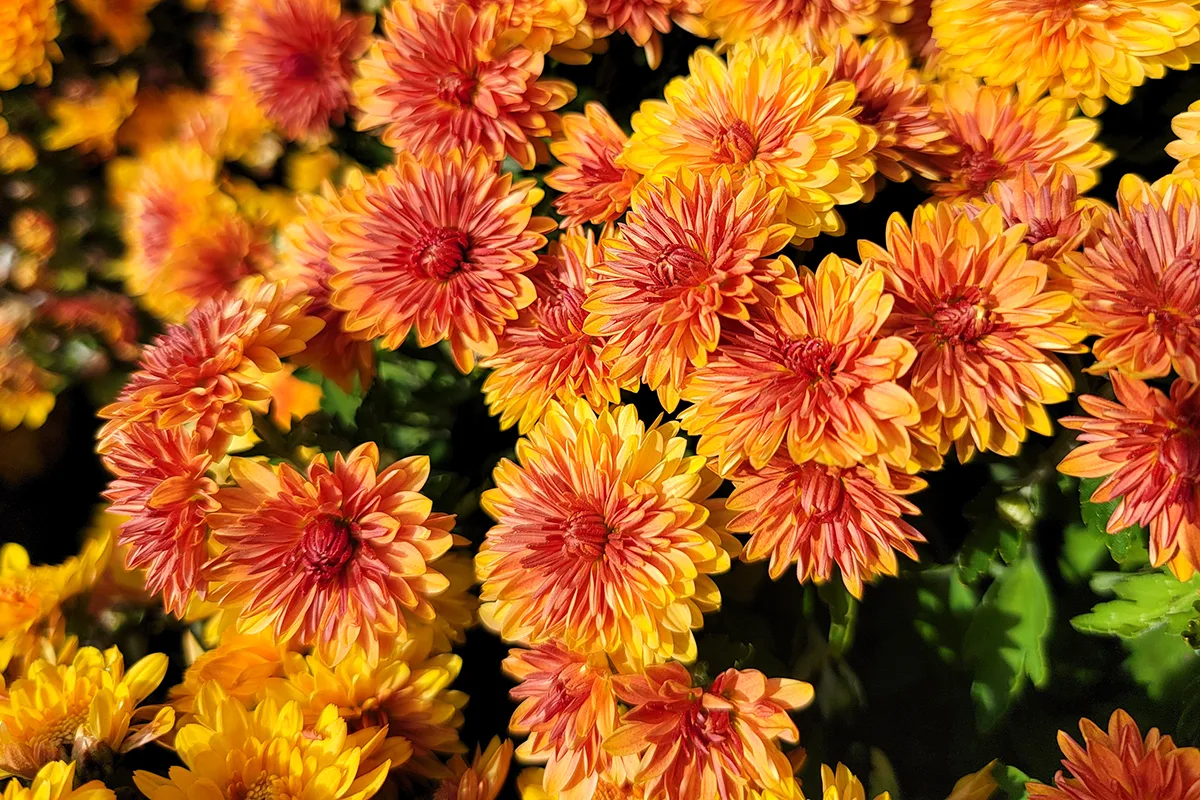
Right about the time the first snow flies, it’s not uncommon to find the dried-up skeletons of mums sitting at the end of driveways, waiting for trash collection. But it doesn’t have to be this way.
Chrysanthemums are the second most commonly disposed seasonal plant. I’ll give you one guess what plant is number one.
But just like the ill-fated Christmas poinsettia, you can keep your mums and enjoy their glorious colors again next year. Wintering over hardy mums is pretty easy to do too.
If you want to keep your mums alive, so they will regrow again next year, you’ve got three different options. All these options start by trimming the plants back to 4” once the plant begins to die back.
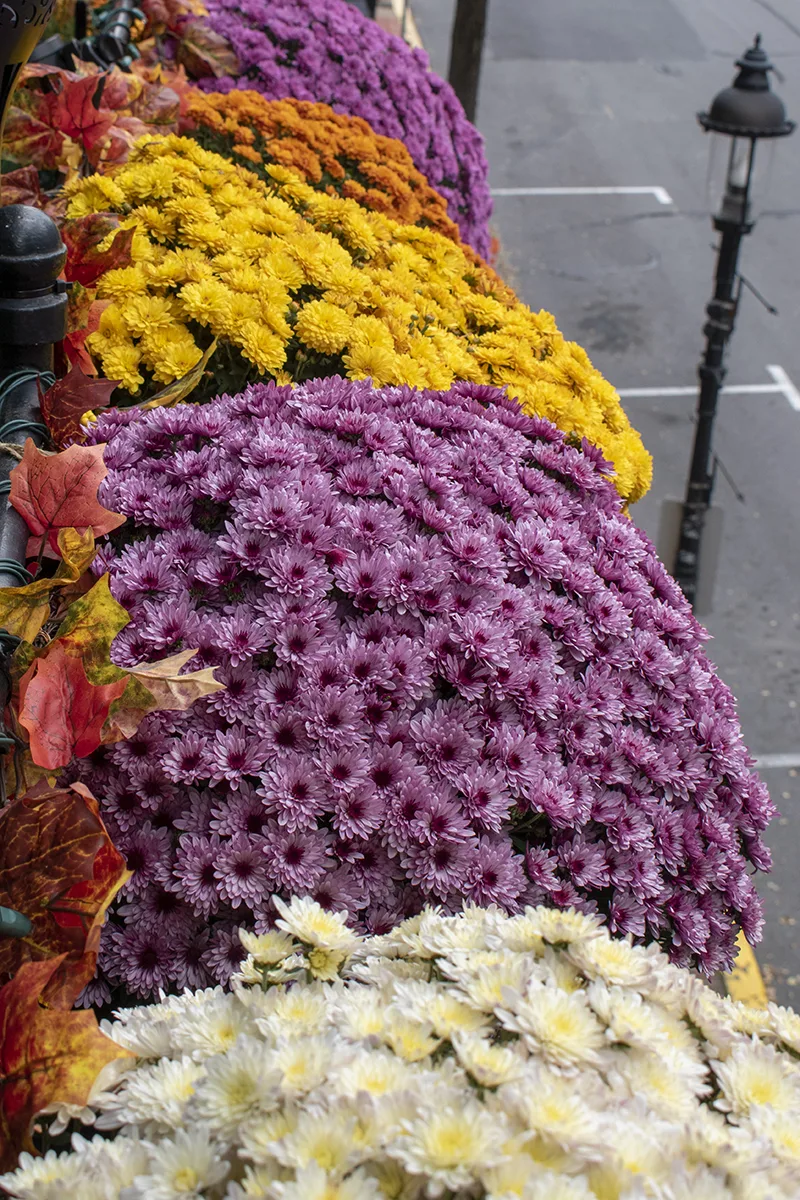
1. Put Them in the Ground
If your mums are already planted in the ground, lucky you; the only thing you need to do is trim back your plants; they will be fine where they are.
Overwintering your mums directly in the soil is perhaps the easiest way to keep them alive.
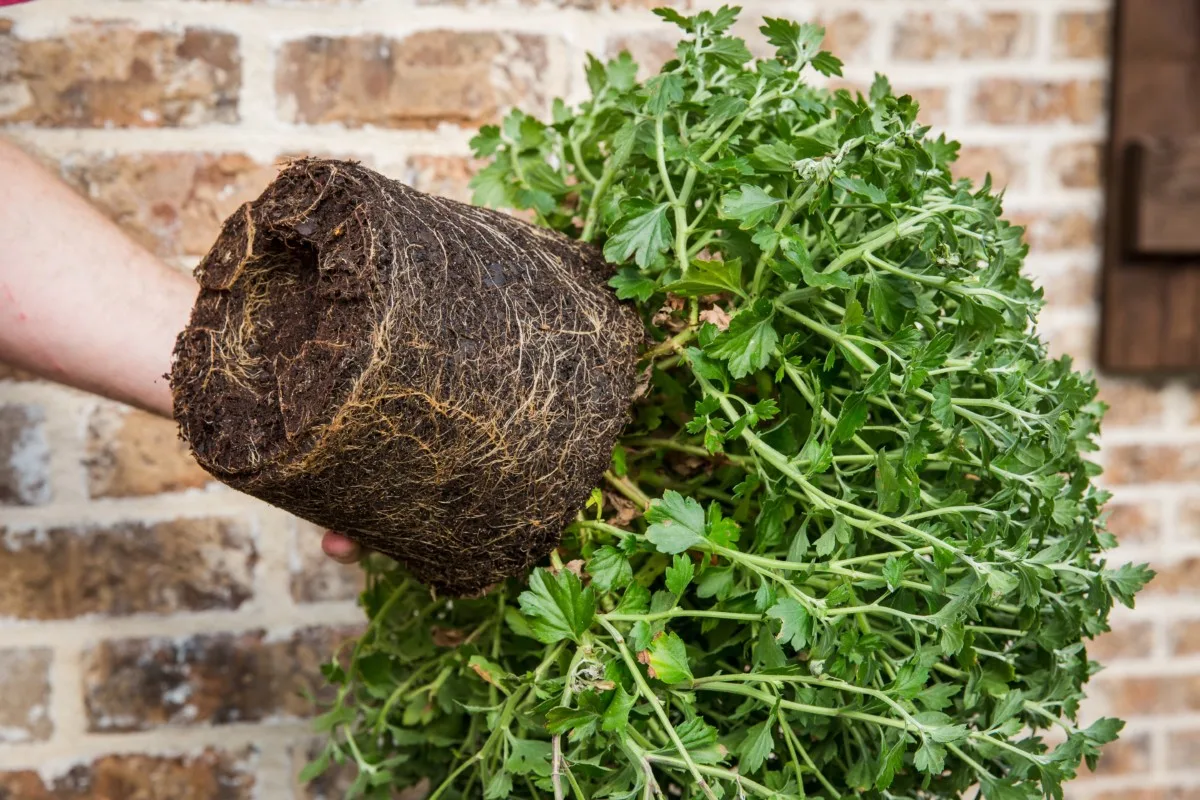
You don’t even have to take them out of the pot. Dig a hole large enough to accommodate the pot and place it in the ground. Pack some soil back around the sides and base of the plant, and you’re all set. The plants will naturally go dormant with the onset of colder weather and shorter days.
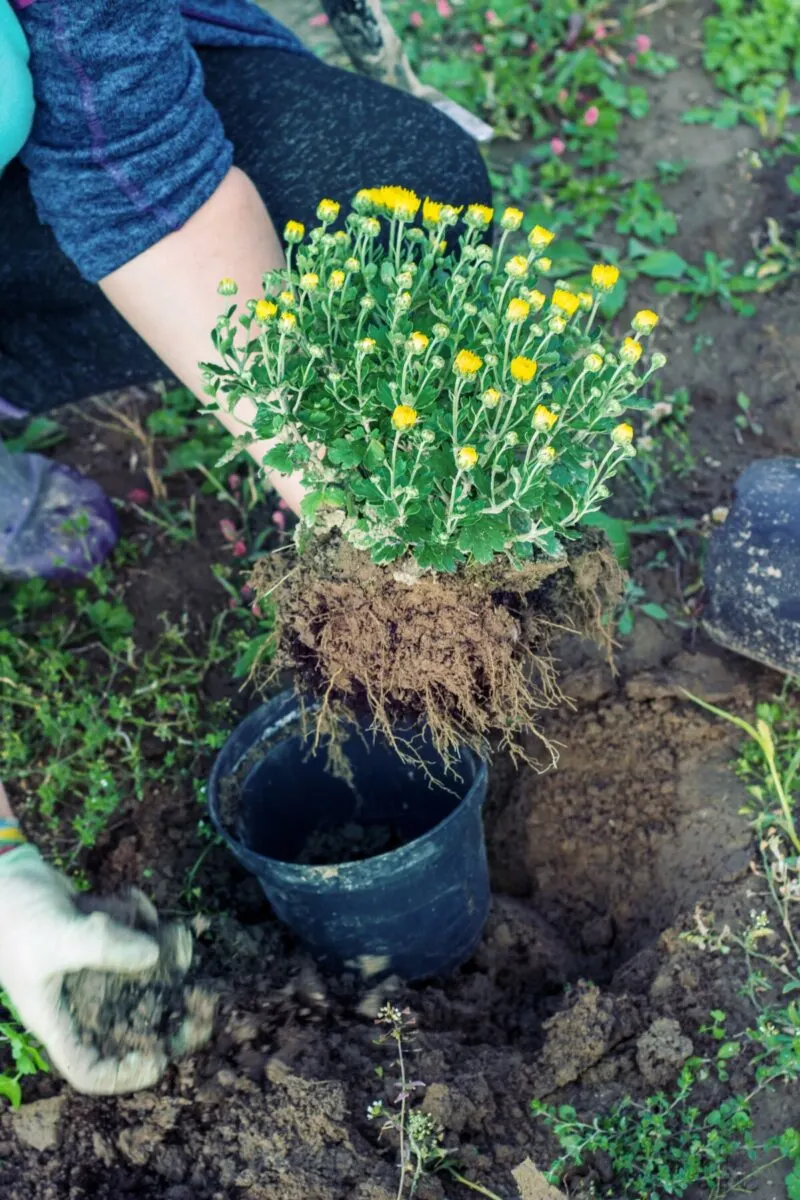
Overwintering your mums in the ground means you don’t have to worry about watering them, either.
2. Give Them Shelter (Again)
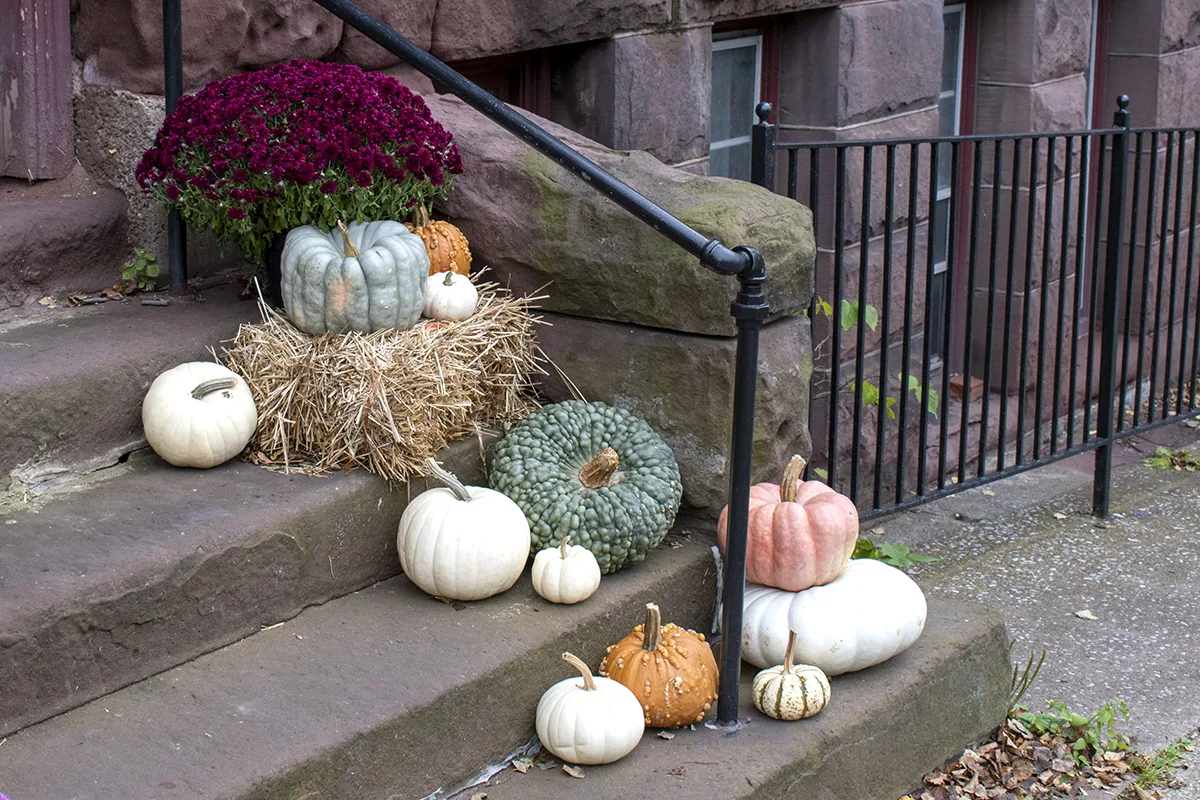
Another easy option is to set your mums up against the side of a building that gets plenty of hot afternoon sun. As long as your mums can soak up the residual heat from the building, they will stay warm enough to prevent frost damage to the roots during the winter. If you want to be extra careful, pack leaves or mulch around the base of the pots to insulate the roots.
3. If You’re Cold, They’re Cold – Bring Them Inside
Finally, your last option for over-wintering chrysanthemums is to bring them inside. Your home is much too warm for mums; you want them to go dormant. Place them in an unheated garage or garden shed instead. You want to make sure it’s dark wherever you store them; this will ensure that they remain dormant.
Water the plants once a month. You want to moisten the soil enough to wet the roots but not so much that the plant will rot or begin growing too soon.
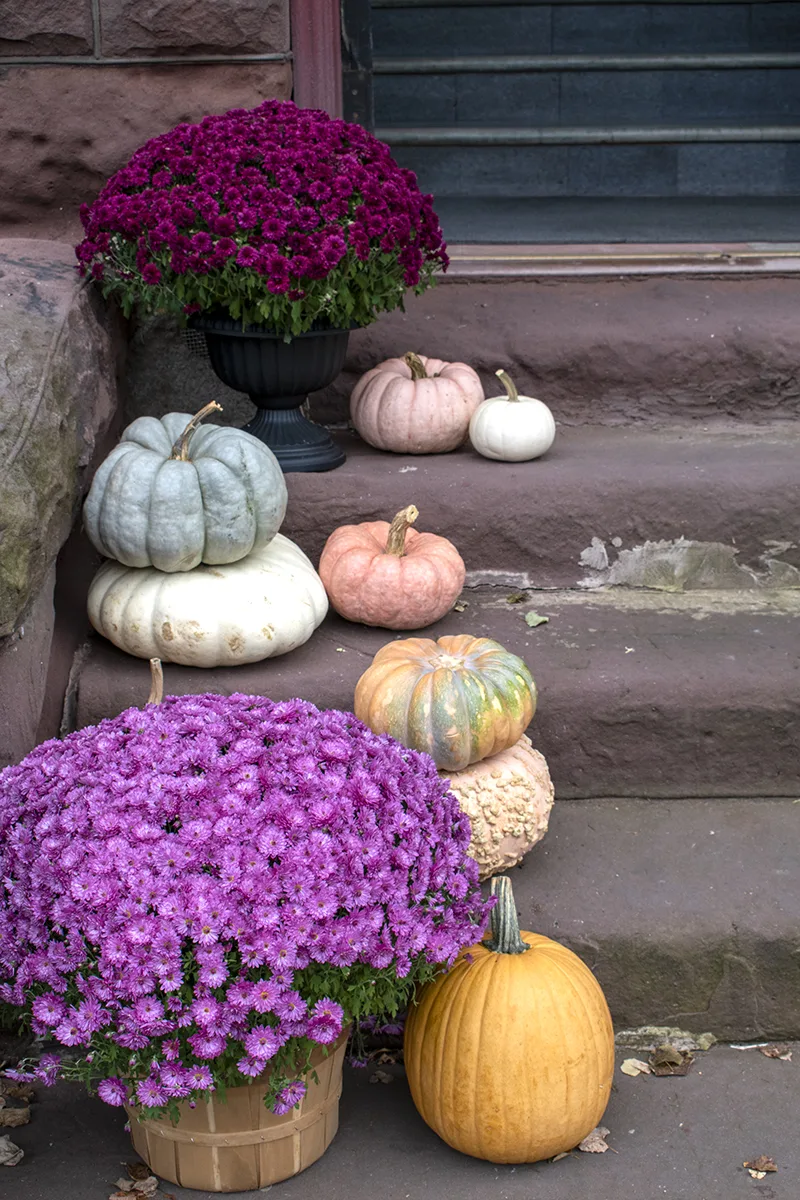
For all of these options, once spring comes and the plants begin to put out new growth again, you will want to repot them with fresh soil. In late summer, be sure to use a fertilizer that promotes blooms or fruiting, so something that has a higher amount of potassium in the NPK ratio.

Get the famous Rural Sprout newsletter delivered to your inbox.
Including Sunday musings from our editor, Tracey, as well as “What’s Up Wednesday” our roundup of what’s in season and new article updates and alerts.


